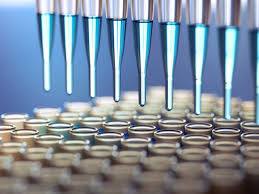Essential Guide to Their Function & Uses in Labs

Today in the world, research is essential in every scientific field. Microbiological, chemical, and biochemical research requires both time and precision. Today, the use of quality laboratory equipment and tools is critically important. Many researchers work with liquids and small volumes of solvents every day. For effective work, special pipettes are used for accurate measurements. Pipettes provide accuracy, safety, and contamination control in laboratory settings. Equally important are special pipette tips that attach to pipettes for enhanced precision.
Tips are essential for handling liquids, making the process clean, sterile, and safe. Tips represent a modern solution for precise and practical laboratory tasks. Through tips, researchers ensure sterility and safety in their work. Liquid transfer reaches high levels of accuracy through different types of tips. The primary function of pipette tips is to provide high-quality experimental results. Tips are available as filtered or unfiltered, sterile or non-sterile depending on the study. Researchers choose the best option depending on their experimental requirements. It is important for everyone to understand tip types and materials for correct results. Selecting quality tips directly affects the experiment and contamination control.
What is the Function of a Pipette in Lab?
Pipettes are critical tools for laboratory research in all scientific fields. Pipettes are specialized tools used to transfer various liquid volumes accurately. It is essential to understand what is the function of a pipette, especially in different research applications. This indispensable tool helps measure and transfer various liquids with precision. Different types of pipettes are used to achieve optimal experimental results. A pipette helps obtain accurate results, depending on exact volume and liquid type. Even complex processes can be performed with proper techniques and quality pipettes. Here is key information on the purpose of a pipette:
- With quality pipettes, researchers can accurately measure various solvents and solutions. With pipettes, researchers measure volumes from microliters to milliliters depending on the study. Accurate measurement is critical to achieving experimental success and reproducibility.
- Equally important is controlled transfer to ensure reliable experimental results. Even the slightest deviation can lead to serious measurement errors. Precise liquid transfer occurs from one container to another with reproducible accuracy. Researchers avoid spillage or contamination in their work areas during transfers.
- It is essential to know what is the function of a pipette in laboratory research beyond simple transfer. Equally important is sample preparation and mixing of different reagent solutions. Researchers mix reagents and prepare solvents using pipettes with appropriate tips.
- Quality pipettes help ensure accurate reproducibility for reliable experimental results. Experiments are carried out with precise measurements without spillage or errors. Consistent results depend on proper pipetting technique and quality equipment.
- Quality pipettes help comply with safety and contamination control rules effectively. Through proper pipetting, researchers avoid contact with various solvents and potentially dangerous liquids. This protection is essential when working with hazardous or toxic materials.
- An essential purpose of a pipettes is improving efficiency during laboratory research. There are electronic pipettes that minimize physical strain on researchers’ hands. Quality pipettes help reduce time and achieve success in liquid handling.
What is a Pipette Tip and What is it Used For?
Tips are popular tools in laboratory research worldwide for accurate measurements. Through tips, researchers can accurately measure solvents and liquids for transfer. Tips are used every day in large quantities across research laboratories. Today, everyone can choose a quality pipette tip box for studies and experiments. The question “What is a pipette tip?” is particularly relevant in laboratory work. Pipette tips help create a special barrier between the pipette and sample. It is this barrier that is best for minimizing contamination and maintaining sterility. Through tips, researchers can work accurately with any liquid and solvent. Here are the key uses of tips:
- Tips are indispensable for accurate and correct liquid dosing during experiments. Tips provide the exact amount of liquid during transfer and dispensing operations.
- Most people are interested in “What are pipette tips used for?” beyond dosing. Through tips, researchers can protect samples from various contamination sources effectively. Tips minimize direct contact between the pipette and the liquid being handled.
- Sterility and safety are paramount in laboratory environments for reliable results. Through tips, researchers avoid cross-contamination, which can be dangerous for experiments. Cross-contamination is avoided in molecular biology and microbiology for clear results.
- Tips are essential for working with hazardous materials and dangerous chemicals. Researchers control the entire workflow with chemicals using proper tip selection. Adhering to strict conditions helps minimize contamination risks and substance contact.
- Understanding “what is a pipette tip?” and usage features helps researchers maintain sterility. Tips help in workflows with sensitive laboratory practices and procedures. Cell cultivation often takes considerable time and requires increased precision.
- Pipette tips are disposable instruments that ensure sterility and quality results. They do not require sterilization and cleaning when working with samples.
Micropipette Tips vs. General Pipette Tips
The modern world of laboratory research uses various instruments for different applications. Tips are designed for many types of instruments for precise measurements. Today, pipette and micropipette tips are modern popular solutions for laboratories. Each type is important but used for different experimental purposes. The main difference is volumetric capacity and precision during research applications. It is essential to compare their applications and learn key differences. Here are the key characteristics:
Micropipette tips:
- Tips are designed for volumes from 0.1 to 1000 μl during research. These tips are ideal for high-quality and precise research applications. Researchers use these tips for small-scale measurements requiring exceptional accuracy.
- Tips are used for working with DNA, RNA assays, and enzyme samples. Researchers use precision pipette tips for accurate and sterile laboratory work.
- Tips are narrow and compatible with multi-channel or single-channel micropipettes effectively.
General pipette tips:
- Researchers use pipette tips for larger volumes from 1 to 25 ml. The main advantage is good accuracy during routine laboratory testing procedures.
- Tips are used for standard solutions that are handled every day. These tips are cost-effective for high-volume laboratory applications.
- Usually, the size of tips is wider to work with different instruments.
What Are Pipette Tips Made Of?
Tips are essential tools for many microbiological and chemical studies worldwide. Due to high-quality material composition, tips are used to transfer liquids safely. Tips are excellent tools for minimizing contact between substances and pipettes. The question “what are pipette tips made of?” and their differences is important. The material depends on the application method and usage in research. Tip material has a significant impact on durability, sterility, and laboratory safety. Material is considered by researchers when working with various studies. Researchers consider chemical resistance and suitability for specific experimental methods. Many tips are made of special plastics that are common in research. Materials play essential roles in chemical compatibility and accuracy during experiments. Here is the key answer to “What are pipette tips made of?”:
- Polypropylene. Polypropylene is one of the most common materials in laboratory research. Polypropylene is used for contact with chemical and hazardous substances safely. Researchers use polypropylene tips for their low reactivity and chemical resistance.
- Low-retention plastic. Typically, low-retention plastic is used for special surface treatment. This plastic helps prevent liquid from adhering to surfaces during experiments. Low-retention plastic is a common material used for specific research purposes.
- Filtered tips. Filtered tips have special aerosol barrier filters for contamination prevention. The filter helps block aerosols during experimental procedures effectively. Filter material is usually hydrophobic polyethylene or similar materials.
- Sterile material. Micropipette tips or pipette tips can be made from sterile materials. Sterile versions are usually pre-sterilized for research applications requiring contamination control. Sterile tips are used for precise and sterile conditions in experiments.
- Colored material. Colored tips are common for volume identification and workflow organization. Typically, colored material comes from dyed polypropylene used in specific research applications.
How to Choose the Right Pipette Tips
Quality and correct tips have a significant impact on accuracy and reproducibility during experiments. Choosing quality tips helps ensure accuracy, sterility, and reliable experimental results. Quality tips increase sterility, safety, and prevent cross-contamination between samples effectively. Good tips handle different volumes and are used in many studies. Depending on needs and pipette tip functions, researchers make informed choices. Here are key guidelines for choosing the right tips:
- It is essential to choose the exact size that will be compatible with your pipette. Depending on size, researchers use tips for specific experimental purposes.
- Sterility plays a vital role in various laboratory experiments and procedures. For microbiology work, sterility is key; sterile tip material is essential.
- Evaluating routine studies or sensitive assays is essential for choosing filtered or non-filtered tips. Consider your application requirements when making this important selection decision.
- It is important for researchers to consider low-retention tips that work best for valuable samples. These specialized tips minimize sample loss and improve recovery rates.
- Choosing the right pipette tips has a significant impact on compatibility with the pipette. Proper compatibility affects both accuracy and instrument longevity over time.
- Color coding plays a vital role in correct size identification and organization. Color-coded tips help prevent errors and improve laboratory workflow efficiency.
Today, choosing good brands and suppliers with quality instruments is equally important. Choosing reputable brands helps maintain accuracy, safety, and regulatory compliance standards.





